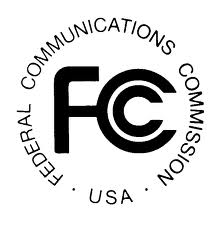 I recently received a phone call from a very senior government rep of a very large wireless carrier. The carrier’s rep called to share his displeasure that the city I frequently work with would not administratively grant approval of what he determined to be subject to Section 6409(a) of the Middle Class Tax Relief Act as modification project of an existing cell site.
I recently received a phone call from a very senior government rep of a very large wireless carrier. The carrier’s rep called to share his displeasure that the city I frequently work with would not administratively grant approval of what he determined to be subject to Section 6409(a) of the Middle Class Tax Relief Act as modification project of an existing cell site.
Here are the general facts:
- When the Planning Commission approved the initial cell site project, it explicitly placed a condition on the project that required the applicant to come back to the P.C. for any site modifications;
- The carrier accepted the condition;
- Now the carrier wants to modify the site to change out the antennas (and presumably a bit more) to support 4G services;
- The carrier does not want to back to the Planning Commission since that would require public notice and a hearing;
- The city has no administrative approval process to allow staff to override a Planning Commission condition on an approved project; and
- As of this writing, the carrier’s rep has not yet submitted his project modification application to the city.
The government planner for the city involved told the carrier’s rep that he would have to submit his request following the usual application process, and that the project could be scheduled quickly for Planning Commission review. The carrier’s rep told the planner that the cty is obligated to process 6409(a) projects administratively and to then grant approval without a hearing. The carrier’s rep threatened to sue the city if the project was not administratively approved. He made the same assertion and threat to me when we talked.
I told the carrier’s rep that nowhere in 6409(a) did Congress define an administrative process–much less any specific process–that a local jurisdiction must follow when considering (1) whether a project is subject to the benefits of 6409(a) treatment, and (2) if the project is subject to 6409(a) treatment whether the project must be approved administratively. He disagreed, saying that its employer’s problem if the city has no administrative process to follow, and that 6409(a) requires it.
What I told the carrier’s rep is that where no administrative procedure exists to override a Planning Commission condition on an approved project, the condition (to bring back any site modifications to the Planning Commission) has to be followed even if the outcome may be predetermined by 6409(a). Remember, whether a project is subject to 6409(a) is a factual determination that must be made by the local government, rather than by the carrier. Given that the FCC’s guidance of last month is not binding on cities or even the Commission, and that guidance requires you ignore the plain words in the statute to follow the Commission’s recommendations, it’s obvious that facts have to be determined, and that those facts count.
The bottom line is that there is no federal requirement under 6409(a) that any particular process be used when considering a project that may be subject to 6409(a).
Where there such a requirement in the text of 6409(a), it would simply bolster the already interesting commandeering arguments being made by local government counsel who assert that 6409(a) is unconstitutional.
Time will tell.
PS: Don’t forget that the FCC shot clock still applies to 6409(a) projects, just like it does to non-6409(a) projects.

 discussed in terms approaching plain English in the Commission’s widely-used publication, “
discussed in terms approaching plain English in the Commission’s widely-used publication, “